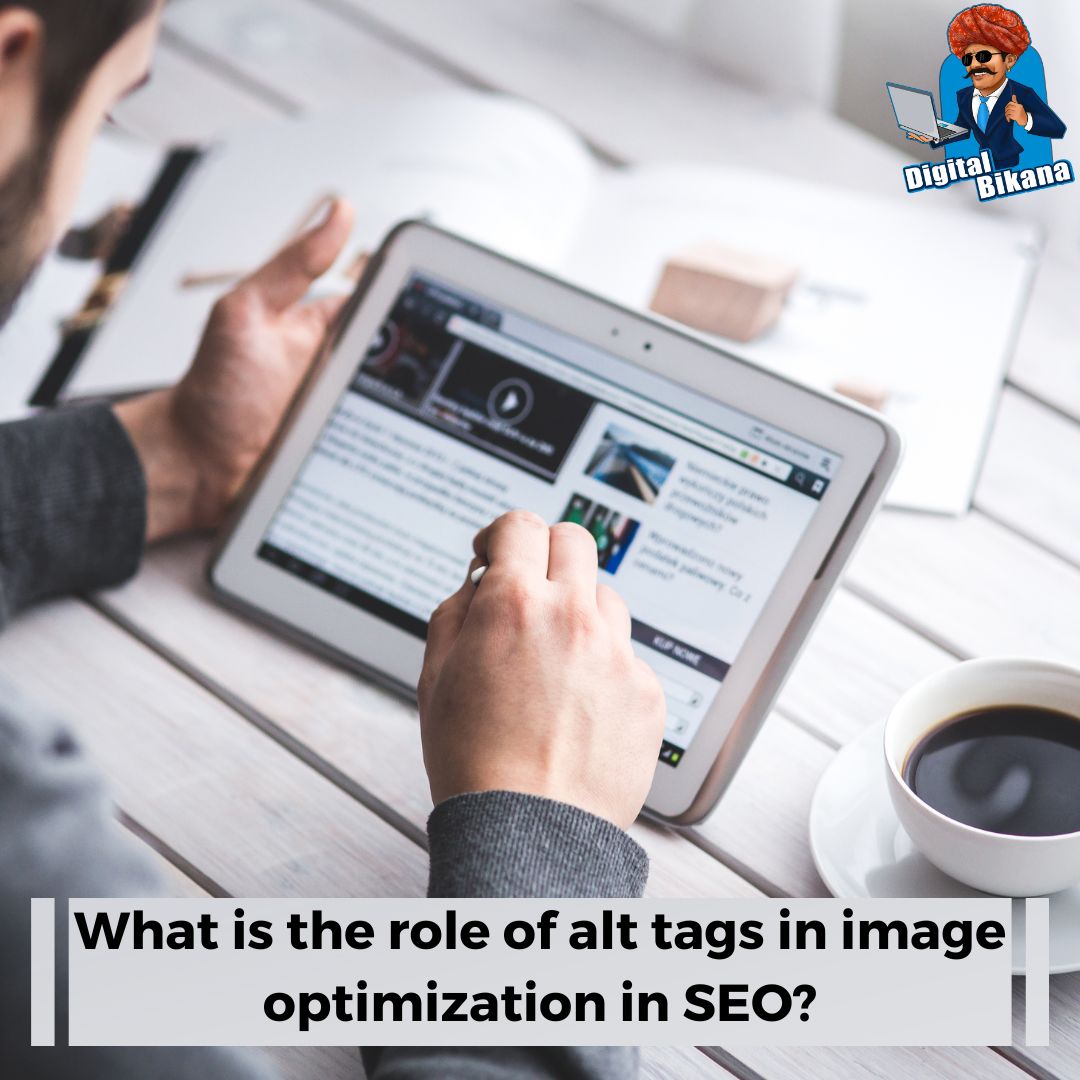What is the Role of Alt Tags in Image Optimization for SEO?
In this article we are going to talk about What is the role of alt tags in image optimization for SEO? In today’s digital landscape, optimizing images for search engines is a crucial aspect of SEO. While search engines can analyze text-based content, they cannot interpret images on their own. This is where alt tags, also known as alt attributes or alt text, play a significant role. Alt tags provide textual descriptions of images, allowing search engines to understand and index them accurately.
What is the Role of Alt Tags in Image Optimization for SEO?
In this comprehensive guide, we will explore the role of alt tags in image optimization for SEO and discuss best practices to enhance your website’s visibility in search results.
1. What are Alt Tags?
Alt tags in HTML serve as attributes that offer alternative text descriptions for images. They were initially introduced to assist visually impaired individuals using screen readers to understand the content of an image. However, alt tags have evolved to serve a dual purpose – improving web accessibility and enhancing SEO.
2. Importance of Alt Tags in Image Optimization for SEO:
a) Image Accessibility
Alt tags make images accessible to visually impaired users who rely on assistive technologies like screen readers. A descriptive alt tag helps them understand the context and content of the image.
b) Search Engine Indexing
Search engines rely on alt tags to comprehend the content of images. By providing relevant and descriptive alt tags, you enable search engines to index your images accurately and rank them appropriately in relevant search results.
c) Image Search Optimization
Alt tags contribute to optimizing images for image search results. When users search for specific keywords related to an image, search engines analyze alt tags to determine its relevance and display it in image search results.
d) Content Relevance
Alt tags help search engines understand the context of your content and its relationship to the image. This enhances the overall relevancy of your page, potentially improving its ranking in search results.
Read Also: What is the Role of Social Signals in SEO?
3. Best Practices for Alt Tag Optimization
a) Be Descriptive
Write descriptive alt tags that accurately represent the content and purpose of the image. Use concise and specific language to provide clear information.
b) Keyword Relevance
Incorporate relevant keywords naturally within alt tags, but avoid keyword stuffing. Ensure the keywords used are directly related to the image and provide meaningful context.
c) Be Concise
Keep alt tags concise while conveying the necessary information. Aim for a maximum of 125 characters to ensure compatibility with different devices and platforms.

d) Avoid Keyword Stuffing
While keywords are important, avoid overusing them in alt tags. Focus on providing relevant and meaningful descriptions that add value to the user experience.
e) Don’t Use Repetitive Alt Tags
Each alt tag should be unique and specific to the corresponding image. Avoid using the same alt tags for multiple images, as this can confuse search engines and hinder proper indexing.
f) Use Human-Friendly Language
Write alt tags in a way that is easily understood by both search engines and users. Use natural language and avoid technical jargon or excessive abbreviations.
g) Captions and Contextual Surroundings
Consider the captions and surrounding text when crafting alt tags. Ensure consistency and relevance between the alt tag, caption, and surrounding content to provide a cohesive user experience.
4. Additional Considerations for Image Optimization:
a) Image File Names
Before uploading images to your website, rename the image file using descriptive keywords. This not only helps with image optimization but also aids in overall SEO.
b) Image Size and Compression
Optimize your images by resizing them to an appropriate size and compressing them without compromising quality. Large image file sizes can slow down your website, negatively impacting user experience and SEO.
c) Responsive Design
Ensure your images are responsive and adapt to different screen sizes and devices. This improves user experience and supports mobile SEO.
You can also checkout this digital marketing institute to learn digital marketing course by enrolling in our course Or Contact Digital Bikana on +91-8949483728
d) Image Sitemaps
Include your images in XML sitemaps to help search engines discover and crawl them more efficiently. This enhances the chances of your images being indexed and displayed in search results.

Conclusion:
Alt tags play a crucial role in image optimization for SEO by improving accessibility, aiding search engine indexing, and enhancing content relevance. By following the best practices outlined in this guide, you can ensure that your website’s images are properly optimized for search engines and provide a better user experience. Remember, descriptive and relevant alt tags contribute to overall SEO efforts and can help drive targeted organic traffic to your website. Invest time in optimizing your images with well-crafted alt tags, and you will reap the benefits of improved search visibility and user engagement. So, Now I hope you have understood about What is the Role of Alt Tags in Image Optimization for SEO?

